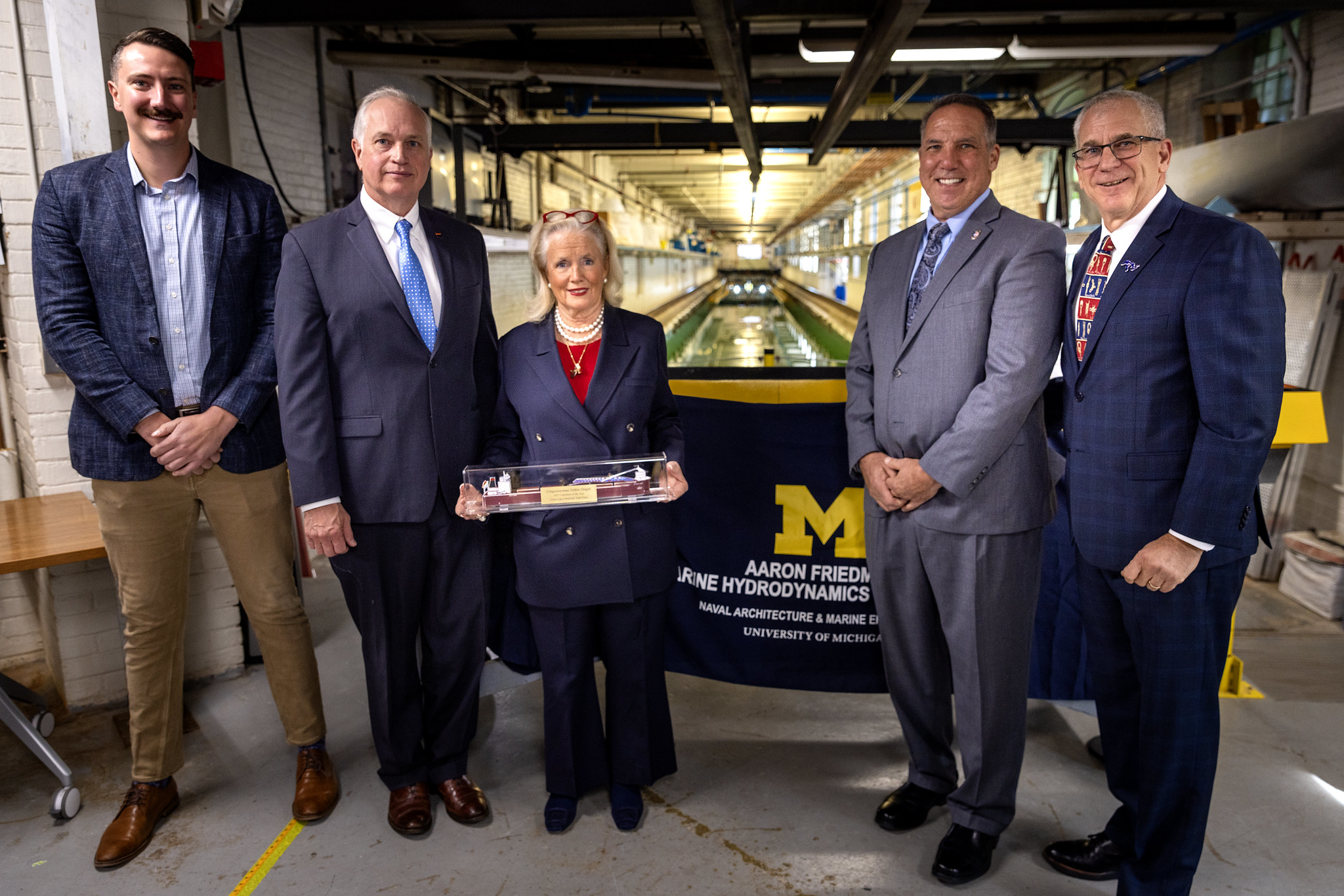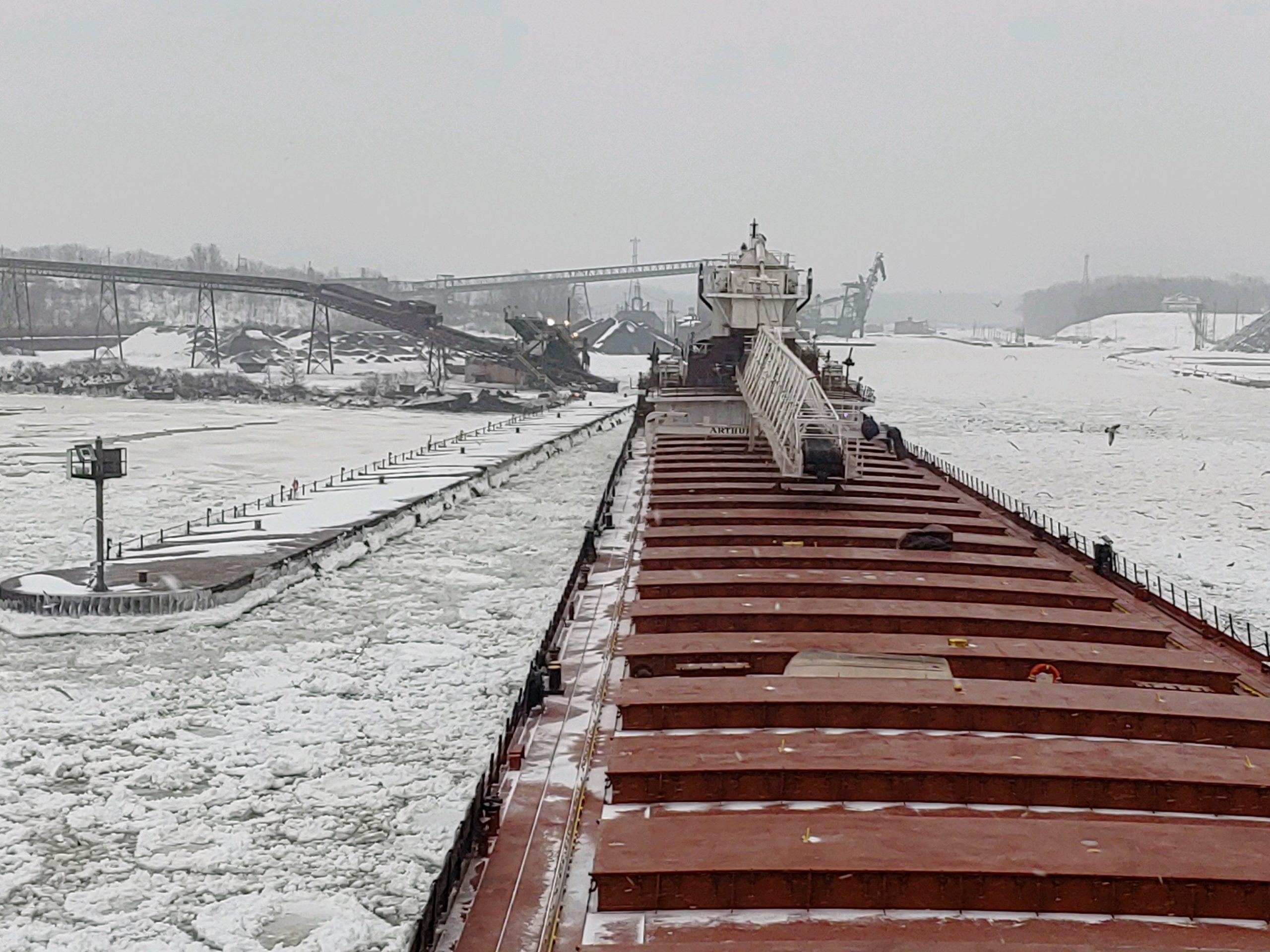Port Huron, MI (August 18, 2025) – On Monday, August 18, 2025, the Great Lakes Maritime Task Force (GLMTF) recognized Michigan Congresswoman Lisa McClain for her efforts advocating for the Great Lakes Navigation System and those who live and work on or near the Fourth Sea Coast.
“It is an incredible honor to be recognized as Legislator of the Year by the Great Lakes Maritime Task Force. The Great Lakes are not only a vital economic engine for our region, but a national treasure that demands strong, informed policy,” Chairwoman McClain said. “I am proud to advance legislation in Congress that strengthens maritime commerce, modernizes our water infrastructure, and protects the long-term sustainability of the Great Lakes. I will always fight to ensure our Michigan ports, waterways, and maritime workers have the support they need to thrive.”
“Representative McClain has been a relentless advocate for the Great Lakes Navigation System. Whether she is supporting the new heavy U.S. Coast Guard Great Lakes icebreaker, funding for arguably the most important infrastructure project ever at the Soo Locks, or ensuring our lakes are mapped to the highest modern standards, Representative McClain leads the way for Michigan and the entire Great Lakes,” stated John Clemons American Maritime Officers National Vice President of the Great Lakes and President of GLMTF.
Representative McClain’s district falls squarely in the crosshairs of annual ice jam flooding that occurs on the St Clair River and causes hundreds of thousands of dollars to impacted residents. The new heavy Great Lakes icebreaker is a critical tool needed to alleviate those jams to prevent flooding and Congresswoman McClain has aggressively sought construction funding for the vital asset.
The construction of the new large navigational lock in Sault Ste Marie, Michigan remains on track for completion in 2030, thanks in large part to Representative McClain’s tenacious pursuit of U.S. Army Corps of Engineers funding which has kept costs under control and workers on the job. The progress at the Soo Locks has been phenomenal and serves as an ideal example for how a major infrastructure project can be completed when Congress provides bipartisan support.
In addition, Congresswoman McClain has taken a leadership role with the reintroduction of the Great Lakes Mapping Act which would ensure future economic development, resource management, and environmental sustainability in the Great Lakes Region. With only 13 percent of the Great Lakes mapped to modern hydrographic standards, the legislation directs the National Oceanic and Atmospheric Administration (NOAA) to conduct high resolution mapping of the Great Lakes to further understand the underwater environment.
“It is a privilege to be here today to award Representative McClain a well-deserved “thank you” on behalf of the entire U.S. Great Lakes maritime industry. Legislators like Congresswoman McClain get things done and the Great Lakes are fortunate to have such a powerful voice on Capitol Hill moving our region forward,” stated Jim Weakley President of the Lake Carriers’ Association and Vice President of GLMTF.
The ceremony was hosted at the Lakes Pilots Association facility on the banks of the St. Clair River in Port Huron, Michigan. Established in 1960 following the opening of the Saint Lawrence Seaway, Lakes Pilots has provided pilotage services for Lake Erie and the St. Clair and Detroit river systems. Their jurisdiction covers almost 270 nautical miles of waterways, spanning four U.S. states and one Canadian province, containing a combined 12 ports.








